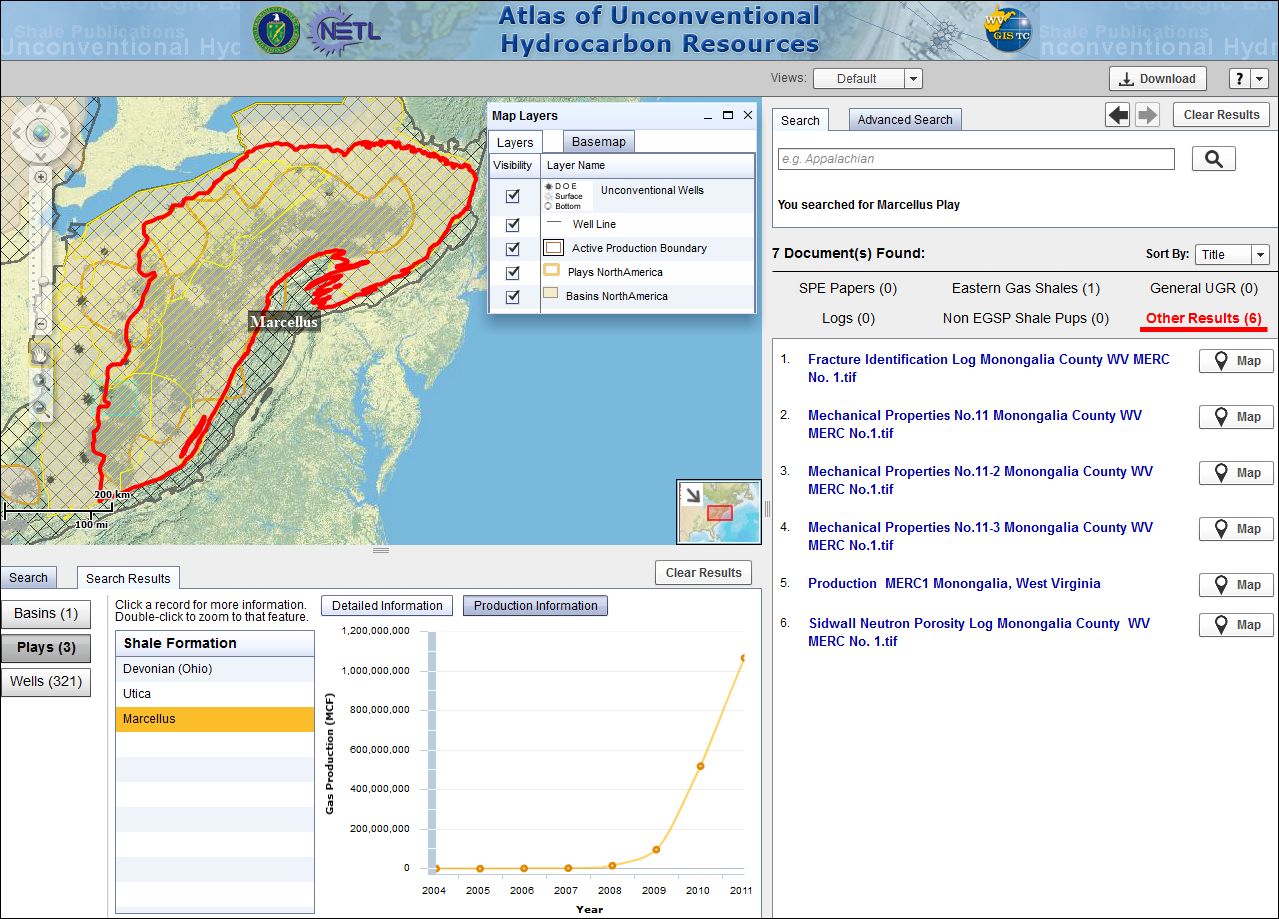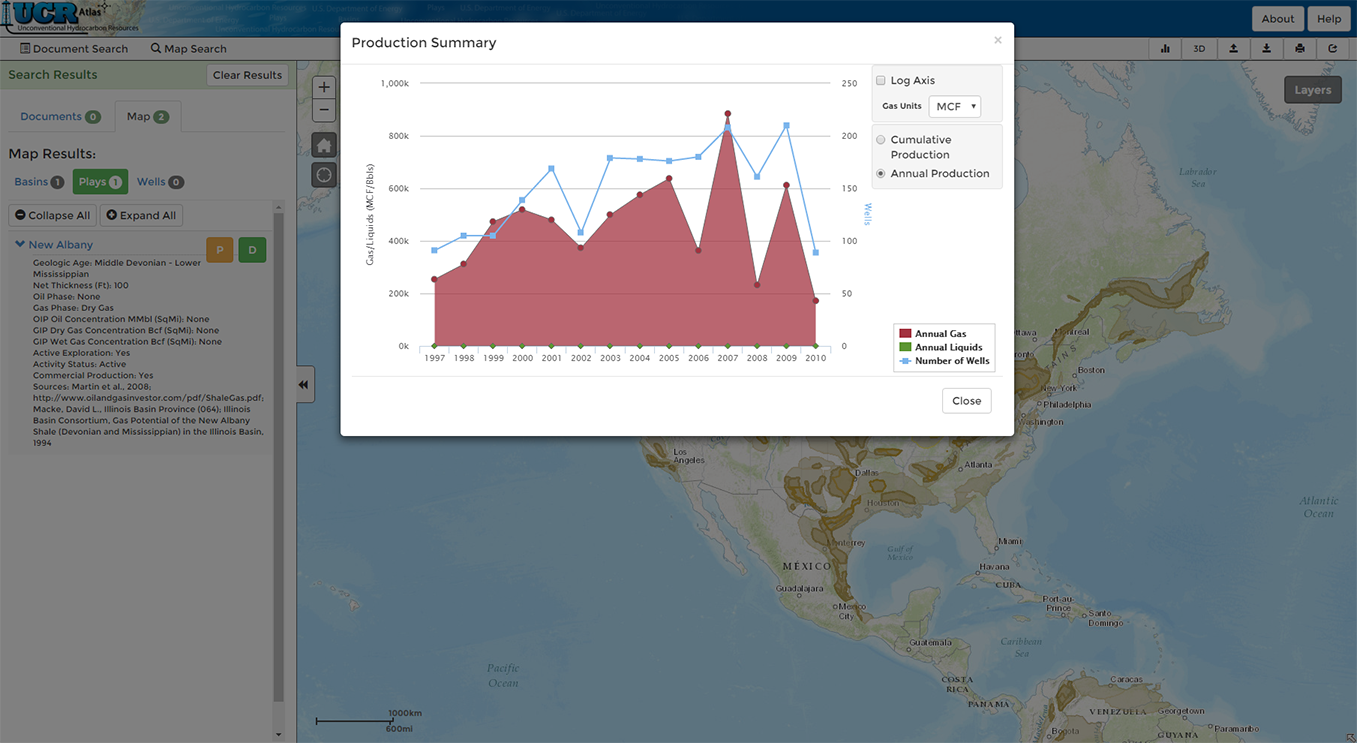About Unconventional Energy Resources
Unconventional oil and gas is differentiated from conventional hydrocarbon resources based on the state of the hydrocarbon, nature of the geologic reservoirs and the types of technologies required to extract the hydrocarbon. Conventional oil and gas deposits have a well-defined areal extent, the reservoirs are porous and permeable, the hydrocarbon is produced easily through a wellbore, and reservoirs generally do not require extensive well stimulation to produce. Unconventional hydrocarbon deposits are very diverse and difficult to characterize overall, but in general are often lower in resource concentration, dispersed over large areas, and require well stimulation or additional extraction or conversion technology. They also are often more expensive to develop per unit of energy and require a higher price to be economic.

Research and investment into unconventional resources has increased significantly over the last two decades due to the higher price environment for oil and natural gas. In several cases, the technologies for economic production have already been developed, while in other cases, the resources are still in the research stage. What has qualified as "unconventional" is a complex and changing interplay of resource characteristics, the available exploration and production technologies and the current economic environment. For example through the use of technology, oil resources such as the Bakken have been converted from previously uneconomic unconventional oil into proved reserves and production. The resources of the Bakken Formation are defined by the United States Geological Survey (USGS) as unconventional "continuous-type" oil resources. The USGS estimates that there are 3 to 4.3 billion barrels of technically recoverable oil in the US Bakken accumulation (USGS, 2008). In 2008, the Bakken produced 27 million barrels of oil an increase of 269% as opposed to the 7 million barrels in 2007 (Rocky Mountain Oil Journal, 2009). Other unconventional liquid hydrocarbons include production from oil sands, ultra-heavy oils, gas-to-liquids technologies, coal-to-liquids technologies, biofuel technologies, and shale oil.
Unconventional natural gas can be of several types. Today, tight gas, coalbed methane, and shale gas contribute significantly to U.S. natural gas production. Offshore and gas hydrates, ice-like solids in which water molecules form a cage-like molecular structure that traps methane represent an extremely large natural gas resource that requires additional research and technology development to be economically produced. Unconventional natural gas resources represent an extremely large gas-in-place volume, and the U.S. has produced only a small fraction of their ultimate potential.
With the addition of 46.1 trillion cubic feet (Tcf), the U.S. had record-high dry natural gas proved reserves in 2007 totaling 237.7 Tcf (EIA, 2009). The reserves additions record reflects rapid development of unconventional gas resources such as coalbed methane and those resources that require advanced technologies like horizontal drilling with hydraulic fracturing, including shale and low permeability (tight) formations. Coalbed methane and shale now represent percent a significant and growing percentage of US natural gas production (15%) and reserves (18%). Total U.S. dry natural gas reserves additions replaced 237 percent of 2007 dry gas production (19.5 Tcf).
